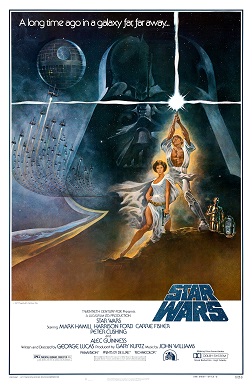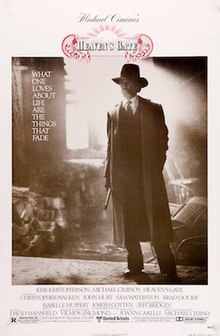WHERE HAVE I BEEN: 2022 was a really busy year for me. I've been through four family weddings in the past summer and fall. It's also a rough year for me as well, as my cousin just died at the age of 21. I've been to so many family events to the point that I've forgotten my strengths as a writer. But now I'm back, and I'm ready to do what I do best, write passionately about the movies.
In the late 1960s, the major Hollywood studios seem to be out of touch with what the current generation of movie goers wanted to see. The old guards that were running the studios had either died or retried, and audiences were tired of the big budget epics and musicals that have been dominating the market since the 1950s, when Hollywood was threatened by television. Change was very much needed and that change came in 1967 with the release of Bonnie and Clyde.
How Bonnie And Clyde Changed American Cinema
The film's origin was a story of Hollywood legend. Studio executive Jack Warner, after viewing a rough cut, hated the movie. He felt that the movie was overly violent and dumped it in small amounts of theaters around the country. It opened to a mixed critical response, but audiences seem to fell in love with this film. With it's frank depiction of sex and violence, anti-establishment themes that resonated with countercultural audiences, and filmmaking techniques that have been borrowed from European arthouse cinema (notably The French New Wave), Bonnie and Clyde, alongside other late 60s hits like 2001: A Space Odyssey, Easy Rider, The Graduate, Midnight Cowboy, and The Wild Bunch, have opened the floodgates of director driven cinema in the 1970s.
The Rise of the American Auteurs
With the major Hollywood studios diminishing power, a new generation of directors have gained more artistic freedom than directors have ever had before. Directors like Robert Altman, Stanley Kubrick, Steven Spielberg, George Lucas, Martin Scorsese, Peter Bagdanovich, Francis Ford Coppola, William Freidkin, Woody Allen, Hal Ashby, and dozens more, have spoke for a generation that have been disillusioned with The Vietnam War and the Nixon administration, an audience that have become increasingly alienated from past generations.
These ambitious directors were influenced by European and Japanese art house cinema, as well as classic Hollywood filmmakers like Orson Welles, Alfred Hitchcock, John Ford, and Howard Hawks. And in taking inspiration from great directors while trying new things, the newer generation of directors have become authors, or as the French call, "auteurs."
As a result of all of this creative power, many film historians and critics have considered the 1970s to be a golden age for American cinema. Of course, any golden age wouldn't last as long as it should have. In the late 70s, Steven Spielberg and George Lucas have inadvertently created a new trend in Hollywood that has had a severe impact in director driven filmmaking: the summer blockbusters.
The Creation of the Summer Blockbusters
In March 1975, Steven Spielberg's upcoming monster movie, Jaws, have heled two successful test screenings in Dallas and Long Beach respectively. Studio executives and producers Richard D. Zanuck and David Brown knew they had a hit on their hands, so they've done something unprecedented in the history of film distribution. Prior to Jaws, films would open in selected cities, then it would open in more theaters across the country based on critical acclaim and positive word of mouth from audiences. Jaws however, was an entirely different matter. It was the first film to open in wide release on its opening weekend, a distribution process most common for exploitation and grindhouse movies.
Universal Studios also spent $2 million on marketing Jaws, from 30 second ads on prime-time TV, to its elaborate merchandising campaign. Companies have sold beach towels, blankets, books, board games, toy sharks, squirt guns, the soundtrack album, and other tie-in merchandise.
On June 20th, Jaws opened in over 400 theaters in North America. By July and August, distribution has ranged from 700 to 950 theaters. By the end of the year, it overtook The Godfather as the top grossing movie of all time, grossing over $100 million domestically. The summer blockbuster has been born.
If Jaws created the high concept, amusement park trend in Hollywood, then Star Wars certainly cemented that on May 25, 1977. It eventually beaten Jaws as the most successful movie ever made, sending Hollywood the message to sell as many crowd pleasing blockbusters to mass audiences as possible. By the late 70s and early 80s, the summer blockbusters were about to dominate the film industry and the auteur era was coming to an end, with Michael Cimino's expensive Western, Heaven's Gate, being the final nail in the coffin.
How Heaven’s Gate Ruined Everything
After The Deer Hunter won the Academy Awards for Best Picture, director Michael Cimino has been given carte blanche from United Artists for his next project, Heaven's Gate. Unfortunately, things went south once the cameras started rolling.
Cimino was a notorious perfectionist and a stickler for authenticity. He would often build, destroy, and re-build sets to his liking, causing massive cost overruns. He also demanded massive retakes to get the performances he wanted, and there's even allegations of animal abuse. Cimino reportedly shot over 220 hours of footage, costing the studio million of dollars.
After production had been completed, a four hour version of the film premiered in New York City on November 1980. By all accounts, the premiere was a complete disaster. It lasted only one week due to negative word of mouth from audiences and critics, including Vincent Canby of The New York Times.
United Artists pulled the movie from theaters so it would be re-cut at a shorter length. A two hour and twenty nine minute version opened to 810 theaters in April 1981, and it had a worse reception as well, with Roger Ebert calling it "the most scandalous cinematic waste I have ever seen." It ended up being one of the biggest bombs of all time, grossing $3.5 million out of it's $44 million budget.
As a result, United Artists have faced financial difficulties that led to its merger with MGM, and other studios no longer give directors the same creative control they had in the 70s. The Hollywood auteur era is over.
Aftermath (The Blockbuster Mentality Of The 1980s)
After the failure of Heaven's Gate, the American film industry shifted its focus on high concept, spectacle driven, crowd pleasing blockbuster films of the 1980s (Superman, Indiana Jones, Ghostbusters, Who Framed Roger Rabbit, Back to the Future, Rambo, Beverly Hills Cop, and dozens more). This also meant making sequels, giving birth to Hollywood's franchise obsession that is still going on today.
The remaining 70s auteurs like Scorsese, Altman, and Coppola have struggled to stay relevant, the independent film boom was in its early stages, and foreign films were given limited distribution in North America. As a result, the blockbuster mentality have created a monoculture, leading to the consensus among many critics and film scholars that the 80s was the worst decade in the history of American cinema.
What made the groundbreaking director driven films so popular with critics and audiences during the 1970s was the sense of dread and cynicism that was going on in America. But with The Vietnam War and Watergate scandal now behind them, and with Ronald Regan inaugurated as president in 1981, the American public has become accustomed to the big budget Hollywood blockbusters.
The most interesting thing is that while many critics consider the 1980s to be a creative dead zone, you still have many beloved films of tremendous quality. Films like Raging Bull, Do The Right Thing, Platoon, The Right Stuff, Scarface, and Brazil. While these films were seen as masterpieces today, things couldn't be farther than the truth on their initial releases. Even John Carpenter's The Thing, a film that it iconic as his 1978 film Halloween, was incredibly controversial. Critics panned it for graphic violence and shocking images, and audiences flocked to see E.T. These high quality films didn't seem to be connecting with audiences that have become accustomed to simplicities and spectacles of the blockbusters.
There is a silver lining to all of this. Things were going to change in the 1990s with the independent film boom and a reviving interest in foreign films. And that's a story for another day.
.jpg/220px-Bonnie_and_Clyde_(1967_teaser_poster).jpg)




No comments:
Post a Comment